
How Floods Affect Your Drinking Water
March 9, 2022 11:01 am Leave your thoughts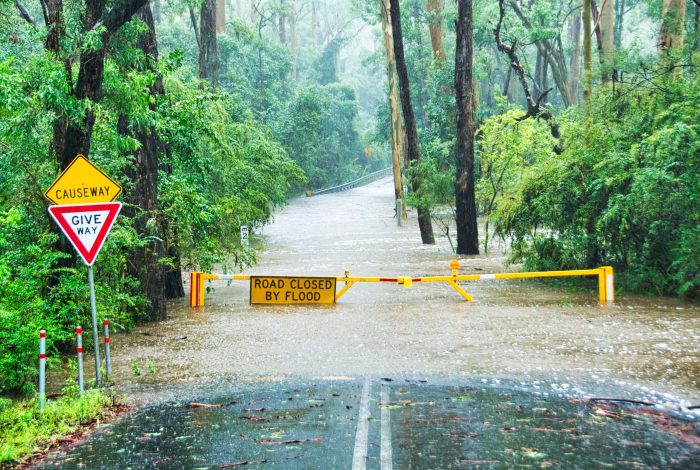
Australia has seen its fair share of natural disasters in the past few years. Floods, bushfires, cyclones, and even earthquakes – we have seen it all.
Floods pose a particularly dangerous threat as they can cause an inundation of contaminants to enter our drinking water reservoirs. These contaminants can overwhelm the systems used to clean our water and cause widespread illness.
To help you better understand the health risk that floods pose, this guide will explain how flooding can affect the water supply and what you can do about it.
How Floods Can Contaminate Drinking Water Supply
A sudden influx of flood water can dramatically worsen the quality of drinking water due to several factors:
Increased Pathogenic Activity In Reservoirs
When it floods, organic matter can be swept into water reservoirs and holding tanks. This can include animal carcasses, animal faeces, sewerage, vegetation, algae, and other types of decaying matter.
Unfortunately, this can make reservoirs and tanks a breeding ground for bacteria, viruses, protozoa, cyst parasites (cryptosporidium, Cyclospora, giardia), and algal blooms.
Water authorities will do their best to remove these contaminants, but it is often very difficult while in the midst of a natural disaster. As a result, residents often have to treat their own water to make it safe to consume, particularly if you are on tank water.
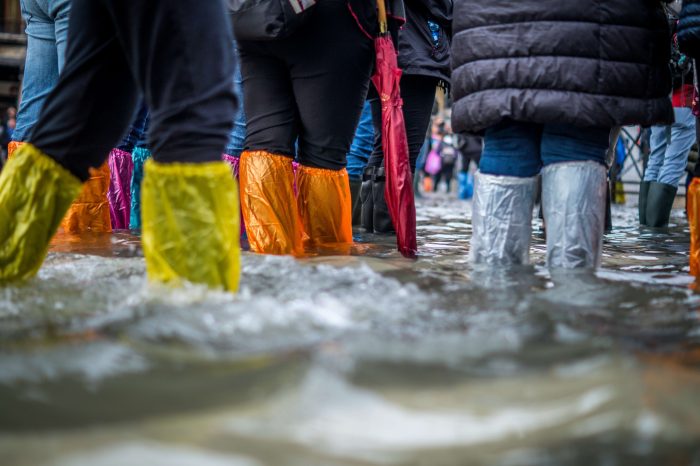
Higher Turbidity
As flood water dumps additional sand, silt, mud, and other particulate matter into local water reservoirs, the turbidity (cloudiness) of the water increases. This is the reason why water coming from your taps can look disgusting after a nearby flood.
Increased turbidity can also affect the decontamination of the water supply. Some disinfection processes and chemicals will become less effective in turbid water, which increases the risk of pathogens making it through water processing plants and into your home.
Cracked And Broken Water Lines
Heavy flooding can cause the ground to shift, which may result in water lines becoming cracked or broken. This gives sand, silt, dirt, bacteria, heavy metals, cyst parasites, raw sewerage and other contaminants a chance to enter water lines directly.
Higher Levels Of Chlorine and Chloramines
In an effort to respond to water quality issues after a flood event, water authorities often increase the volume of disinfection chemicals in use. This helps them provide additional protection against the heavier inflow of bacteria, cyst parasites, viruses, and algae.
Unfortunately, adding more chlorine and chloramines can dramatically worsen the taste and odour of your water. This can make your drinking water unpalatable.
Heavy disinfection also results in the introduction of disinfection by-products (DBHs) like trihalomethanes, nitrosamines and iodoacids. These chemicals are created when chlorine and chloramines interact with decaying organic matter and other chemicals.
Researchers suspect that these chemicals may be linked to some serious illnesses. Trihalomethanes, for example, have been linked to infertility and cancer.
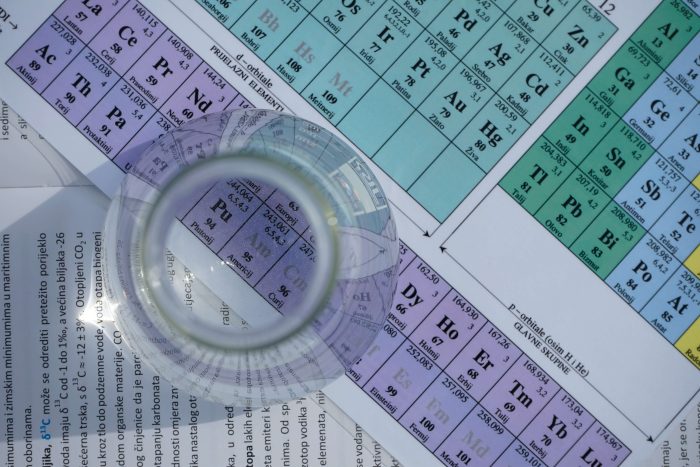
Potential Chemical Contamination
Flood events can cause chemical contamination of water supplies in several ways. Heavy rainfall can cause fertilisers, pesticides, and herbicides to wash from farmland into local water reservoir that are far away. Oil, radiator fluid, and other petrochemicals can wash from roadways and industrial sites into water bodies.
In severe floods, petrol stations, factories, retail stores, and warehouses may see large quantities of chemicals dragged into the flood water. These chemicals can be transported many kilometres and contaminate water ways which are eventually used for drinking water.
Changes To Water pH
Decaying organic matter in waterways can also have an impact on the pH of water entering water reservoirs, making it more acidic. Water processing facilities can also be overwhelmed during times of flood, so the normal pH buffering techniques they use may be impossible. This can result in larger pH swings in certain areas.
Contamination of Tank Water Supplies
Homeowners with in-ground water tanks may see contamination of their stored water. As flood water passes over the top of the tank, it may enter, introducing sand, silt, faeces, mud, leaves, and other contaminants. The tank can then become a mini breeding ground for parasitic cysts (crypto, giardia, cyclospora), viruses, and bacteria.
Flood water may also enter the gutters and downpipes of your property during a severe flood. It may remain there for several days until you use more of the water in your tank. It can then flow into the tank, re-introducing contaminants.
How To Make Your Water Safe After A Flood
Fortunately, there are several ways to make your water safe after a flood event:
Boil Your Drinking Water
Heating water is one of the most effective methods for making it safer to consume. Boiling water will kill or incapacitate any viruses, bacteria, protozoa and other microscopic organisms present in the water supply.
How to sterilise water by boiling it:
- Filter out particulate matter
The water that comes through your taps after a flood could contain sand, silt, dirt, raw sewerage and other nasty particulates.
Pour some water into a clean glass or plastic vessel and take a close look at it.
If the water looks cloudy, let it settle for at least an hour before straining it through a clean cloth, coffee filter, or several paper towels. Place your strained water into a clean cooking pot. - Bring the water to a rolling boil
Place your pot on the stove and set it on high temperature. If your stove isn’t working, use a gas BBQ or a campfire. Heat the water until the bubbles being formed rise rapidly from the bottom of the vessel to the top. This is called a rolling boil. It may take anywhere between 5 to 10 minutes to reach this point. - Disinfect
Let the water remain at a rolling boil for between 1 to 3 minutes. The exact time required will vary based on your altitude. If you are in a low lying area, 1 minute should do, while people living in higher areas like the tablelands should wait 2-3 minutes. - Let the water cool and bottle it
Let the water cool naturally before placing it into another clean container which has a lid. You can now use this water for drinking, washing food, bathing, and for your pets. - Improve its taste (Optional)
Boiled water will taste flat or stale because much of the oxygen has been boiled out of it. If this batch of water will be used for drinking, add a pinch of salt per litre of water to improve its flavour.
Unfortunately, boiling water won’t do much to improve the taste, odour or appearance of your water. It’s also ineffective at removing heavy metals, volatile organic compounds, pesticides, herbicides, disinfection by-products and other chemicals that may have entered the water supply during flooding. You will need a water filter to achieve those goals.
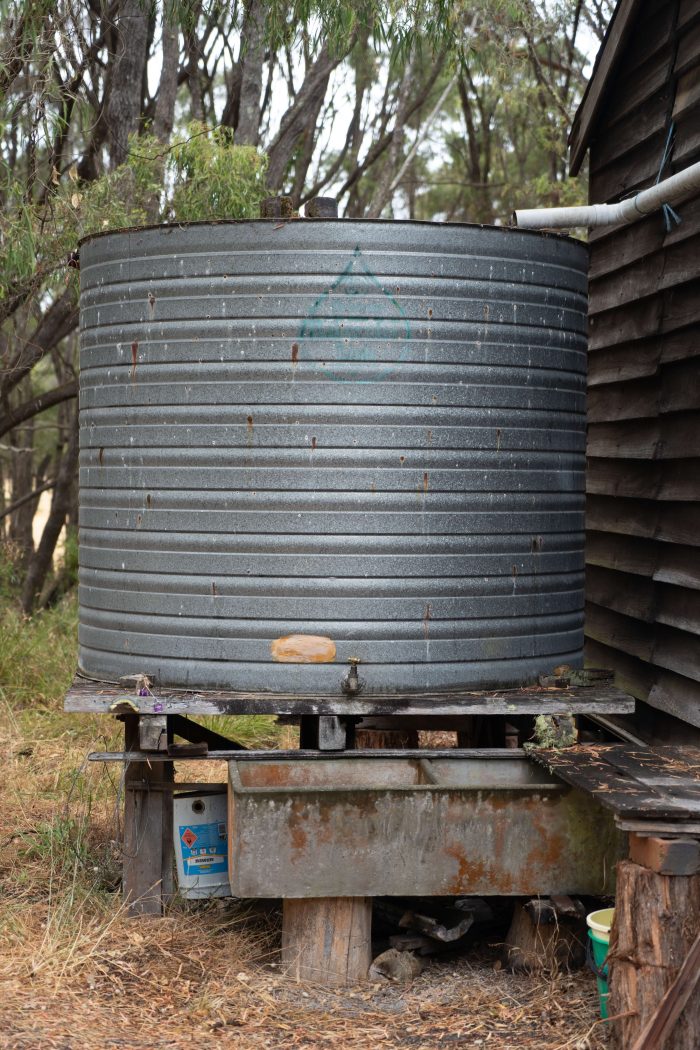
Disinfect Tank Water Using Liquid Chlorine
If you have an in-ground water tank that has been contaminated with flood water, you can sterilise it using liquid chlorine. The chlorine will kill or incapacitate all of the cyst parasites, bacteria, and viruses in the water, making it safe to drink.
If you decide to use this method, be mindful of the risks associated with handling chlorine.
Undiluted chlorine can irritate mucous membranes, the skin and the airways, and reacts easily with other chemicals. Ventilation should be adequate and chlorine should be handled consistent with relevant occupational health and safety guidelines.
Here is how to do it:
- Protect yourself
Put on some eye protection and gloves - Dilute the chlorine with water
Take a clean bucket and fill it with water to about three-quarters
Add 40 ml of liquid chlorine to the bucket for each 1000 litres of water in your tank. For example, if you have 5,000 litres of tank water to disinfect, you would add 200 ml of chlorine to the bucket. This may seem like a small amount of chlorine, but it is a powerful chemical. Stir to combined the chlorine and water - Swirl your tank
Place a water hose the tank and aim it at an angle to make the water swirl in a circle. Run for 5 minutes to get a lot of movement in the tank. - Add to tank and mix well
Pour the chlorinated water into your water tank. Continue using the hose to make a circular pattern for at least another 5 minutes. This will help to mix the chlorine thoroughly within the tank. - Fill pipes with chlorinated water
Go into the house and turn on all of your water taps for a minute to let the freshly chlorinated water into the pipes. - Let the chlorine sit
Wait at least an hour to give the chlorine a chance to work. - Check your water
Pour a glass of water and smell it. It should have a distinct chlorine smell. If it doesn’t, additional chlorine may be required. - Use your water
Your water is ready to drink. If the chlorine taste is too strong, pour some water into a container and let it sit for a few hours so the chlorine taste/odour can dissipate.
Disinfect Town Water Using Chlorine Bleach
If you are on town water and don’t have access to a stove top or fire to disinfect via boiling, you can use chlorine-based liquid bleach (non-scented and without detergents/additives). Follow the instructions on the EPA website.
Performed correctly, this method will kill most bacteria, viruses, algae, and cyst parasites. However, it is ineffective for removing heavy metals, volatile organic compounds, pesticides, herbicides, disinfection by-products and other chemicals that may have entered the water supply during the flood event.
Disinfect Using Iodine
You can also use common household iodine from a first aid kit to disinfect water. Start by filtering out particulate matter, then placing your water in a clean vessel.
Next, add 5 drops of 2 per cent tincture of iodine to 1 litre of clear water and stir the water. If the water is particularly cloudy, double this amount. Let the water stand for at least 30 minutes before consuming.
Commercial iodine tablets can also be used. They can be purchased from sporting goods stores and pharmacies. Follow the manufacturer’s directions to disinfect your water.
It’s important to note that iodine should only be used for short-term emergencies. It should not be used for more than a week in an emergency situation.
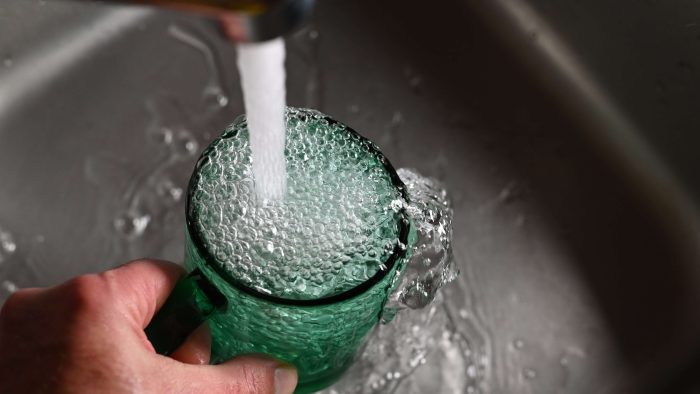
Install A Water Filter
Water filters can be used to remove a wide range of contaminants including:
- Sediment including sand, silt, dirt, and faeces
- Cyst parasites including cryptosporidium, giardia, and cyclospora
- Algae
- Lead and Heavy metals
- Chlorine
- Chloramines
- Disinfection by-products (trihalomethanes,
- Pesticides
- Herbicides
- Petrochemicals
- Volatile organic compounds
- Bacteria (E.Coli, Shigella, Salmonella, Klebsiella, Cholera, Legionella etc)
Water filters containing activated carbon or catalytic will also dramatically improve the taste and odour of water, removing the aesthetic impact of chlorine/chloramines and other contaminants.
Most filters work through a combination of mechanical filtration (physically blocking contaminants) and adsorption (where contaminant molecules stick to the surface of activated carbon).
Some filters also contain materials like KDF which change the molecular structure of contaminants, making them harmless to consume.
The types of contaminants removed will vary based on the types of filters installed.
It is important to note that only very fine ceramic filters and UV systems are capable of removing bacteria. If bacteria is of concern in your area, you may need to filter your water then boil it, install a ceramic filter, or install a UV system.
Some popular options for filtering water after a flood even include:
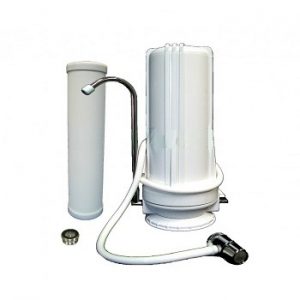
Single Benchtop Water Filters
Single benchtop systems are designed to attach to a standard kitchen tap spout. They are a popular option because they are affordable, easy to install, and can achieve excellent results.
QMP benchtop units are designed to take standard 10” x 2.5” filters, which gives you plenty of choice when it comes filters. You simply unscrew the housing, then put the replacement cartridge inside.
Some of the best filters for dealing with flood water are:
- WC04 0.45 Micron Carbon Block Filter
An extremely fine American made filter which will reduce chlorine, chloramines, cyst parasites (cryptosporidium, giardia, cyclospora etc), bad taste and odours, lead and heavy metals, volatile organic compounds, pesticides, insecticides, petrochemicals and much more. Note: This filter will not reduce bacteria, so water would still need to be boiled or treated if contaminated with bacteria. - GTS1-10 – 1 Micron Silver Impregnated Carbon Block Filter
A 1 micron carbon block made filter which will reduce chlorine, chloramines, cyst parasites (cryptosporidium, giardia etc), bad taste and odours, volatile organic compounds, pesticides, insecticides, petrochemicals and much more. This filter is silver impregnated, which prevents bacteria from growing inside of the filter itself. However, bacteria can still flow through the filter, so it would still need to be boiled or treated if contaminated with bacteria. - Doulton Ultracarb 0.2 micron nominal (0.9 micron absolute)
For maximum protection on from bacteria. British Made Doulton Ultra Carb ceramic filter 0.9 micron absolute. When the filter gets dirty and the flow rate is reduced simply clean with a scouring pad under running water to restore flow. Also reduces heavy metals, chlorine, chloramines, chemicals, pesticides, and insecticides.
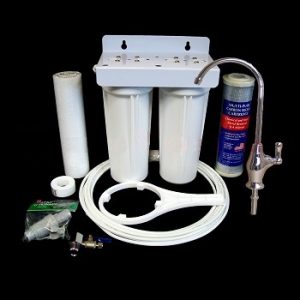
Under Sink Water Filtration Systems
These systems are installed under the sink and typically connected to a 3-way tap or a dedicated drinking water tap. The most popular option are the twin stage systems which combine two filters for achieving a higher level of protection. Some of the most popular filter selections include:
- 1025PS1 Sediment Filter + WC04 0.45 Micron Carbon Block Filter
A 1 micron polyspun sediment filter followed by the WC04. The additional sediment protection is useful for reducing algae, mud, dirt, sand, and silt. The WC04 will then reduce chlorine, chloramines, cyst parasites (cryptosporidium, giardia etc), bad taste and odours, lead and heavy metals, volatile organic compounds, pesticides and more. Note: This filter combination will not reduce bacteria, so water would still need to be boiled or treated if contaminated with bacteria. - 1025PS1 Sediment Filter + GTS1-10 – 1 Micron Silver Impregnated Carbon Block
A 1 micron polyspun sediment filter followed by the GTS1-10. The sediment protection is useful for reducing algae, mud, dirt, sand, and silt. A 1 micron carbon block made filter which will reduce chlorine, chloramines, cyst parasites (cryptosporidium, giardia etc), bad taste and odours, volatile organic compounds, pesticides, insecticides, petrochemicals and much more. This filter is silver impregnated, which prevents bacteria from growing inside of the filter itself. However, bacteria can still flow through the filter, so it would still need to be boiled or treated if contaminated with bacteria. - 5 Doulton Ultracarb 0.2 micron nominal (0.9 micron absolute)
For maximum protection on from bacteria. British Made Doulton Ultra Carb ceramic filter 0.9 micron absolute. When the filter gets dirty and the flow rate is reduced simply clean with a scouring pad under running water to restore flow. Also reduces heavy metals, chlorine, chloramines, chemicals, pesticides, and insecticides.
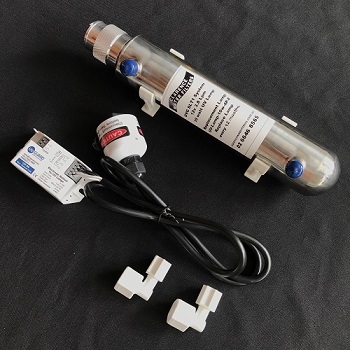
Ultraviolet Steriliser Systems
UV sterilisers use intense ultraviolet light to kill or incapacitate 100% of the bacteria, cyst parasites, algal spores, and viruses in water. The ultimate solution for ensuring your water is safe to drink.
There are only two drawbacks with using UV as a method for water decontamination following a flood event:
- Most UV systems require the power to be working
Power infrastructure can be affected in times of severe flooding, which makes most UV systems inoperable. There are several solutions to this issue, including having a generator or using a 12 volt UV system which can be run off a car battery. - Sediment must be removed for UV systems to be effective
If the water is sediment heavy, contaminants will be able to hide behind other particles. Sediment must be removed down to 5 micron level for UV systems to work, which means you will need a filter system in place before the UV unit.
Our most popular small-scale UV systems for drinking water are:
Twin QMP Under Sink Water Filter System with UV Steriliser
A complete kit with twin QMP 10” x 2.5” housing, filters, tap, and UV Steriliser. The filters included with this unit are the 1025PS 1 1 Micron sediment filter and GTS1-10 1 Micron Silver Impregnated Carbon Block Filter. Read more.
12 volt Ultra Violet Water Sterilizing System 10 watt SLT1-12v
A compact 12-volt system which can be run from a car battery, which makes it ideal for natural disasters which have taken down the power grid. Capable of sterilising poor-quality water at a flow rate of up to 3.8 litres per minute. This unit is also a great choice for homeowners who want to live off grid. Read more.
Larger and 240v Ultra Violet Systems
Larger UV systems in junction with a water filter system can be used to make all of the water entering the house safe to drink. The system you choose will vary based on the flow rate coming into your home, which is measured in litres per minute (LPM).
The simplest way to measure the max flow rate coming into your home is to turn the first tap coming into your home on full, then measure the amount of water it releases in 6 seconds. Multiply this by 10 to get the litres per minute figure.
Alternately, you could time how long it takes to fill a 10 litre bucket, then perform some simple calculations. For example, if it took 24 seconds to fill a 10 litre bucket, that would equate to 0.42 litres per second (10 divided by 24). Multiply this by 60 to discover your flow rate is 24.9 litres per minute. You would need a UV system which could handle 25 LPM or higher.
Note: All UV systems require a minimum of a 5 micron sediment pre-filter before the UV system to clean the water so no bacteria can hide in dirt particles. View some of the UV units that are available here.
Wrapping up
Floods have become a common occurrence in many parts of Australia. Fortunately, we are a resilient bunch and have strong communities which support people in need.
By being aware of what can happen to our water supply when it floods, you can protect your family and supply your community with water free from dangerous contaminants.
For more information on water filtration systems, give us a call on 02 6646 8565 or email us on sales@clarencewaterfilters.com.au.
Tags: Contaminants, Flood, Flood Water, Flooding, Natural DisastersCategorised in: Contaminants, Water Filtration
This post was written by Paul

